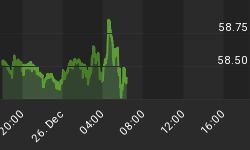Last week, Fed Chairman Ben Bernanke announced that the central bank would launch an unprecedented form of quantitative easing. This "new and improved" iteration of money printing will be without limit and duration. The Fed Head launched QE III ($40 billion of MBS purchases every month) on September 13th and stated that it will remain in effect until the labor market "improves substantially." He also promised that, "The Committee will continue its purchases of agency mortgage backed securities, undertake additional asset purchases, and employ its other policy tools as appropriate until such improvement is achieved..." In other words the Fed will continue to counterfeit money until there is a substantial decline in the unemployment rate.
But there are two major problems with this measure. The first is the Fed Funds rate has been near zero for the last four years and mortgage rates are at all-time lows. Also, the money supply (as measured by M2) is up over 6% from twelve months prior. Therefore, onerous interest rates cannot be the cause of our high unemployment rate. And the money supply is already growing well above productivity and labor growth, so there is already a superfluous amount of money creation. The other major problem with his plan is that the unemployment rate doesn't fall when the dollar is devalued, the middle class gets dissolved and the inflation rate is rising.
The first round of Quantitative Easing began in November of 2008. At that time the unemployment rate in the U.S. was 6.8%. The second round of QE began in November of 2010 and ended by July of 2011. However, after printing a total of $2 trillion and taking interest rates to virtually zero percent, the unemployment rate had risen to 9.1%.
After four years of money printing and interest rate manipulations, the economy still lost 16k goods-producing jobs and 368k individuals became so despondent looking for work that they dropped out of the labor force last month alone. And the unemployment rate has been above 8% for 43 continuous months. Mr. Bernanke must believe that $2 trillion dollars worth of counterfeiting isn't quite enough and 0% interest rates are just too high to create job growth, so he's just going to have to do a lot more of the same. But by undertaking QE III the Fed is tacitly admitting that QEs 1 & 2 simply didn't work.
Here is why printing money can never lead to economic prosperity. The only way a nation can increase its GDP is to grow the labor force and increase the productivity of its workers. But the only "tool" a central bank has is the ability to dilute the currency's purchasing power by creating inflation. Central Bank credit creation for the purpose of purchasing bank assets lowers the value of the currency and reduces the level of real interest rates. Interest rates soon become negative in real terms and consumers lose purchasing power by holding fixed income investments.
Investors are then forced to find an alternative currency that has intrinsic value and cannot be devalued by government. Commodities fill that role perfectly and prices rise, sending food and energy costs much higher. The increased cost of those non-discretionary items reduces the discretionary purchases for the middle class. The net effect of this is more and more of middle class incomes must be used to purchase the basics of existence. Therefore, job losses occur in the consumer discretionary portion of the economy.
The inflation created by a central bank also causes interest rates to become unstable. Savers cannot accurately determine the future cost of money and investment activity declines in favor of consumption. Without having adequate savings, investment in capital goods like machinery and tools wanes and the productivity of the economy slows dramatically.
The result is a chronically weak economy with anemic job growth. This condition can be found not only in the U.S. but in Europe and Japan as well. These stagflationary economies are the direct result of onerous government debts, which are being monetized by their central banks.
I predicted that QEs I & II would not work and I also predicted back in January that QE III would occur in the second half of 2012. I now predict that QE III will fail as well, causing the unemployment rate to rise along with the rate of inflation. In fact, I believe the unemployment rate will increase sharply over time. That will force Mr. Bernanke to choose which mandate (full employment or stable prices) takes precedence. I believe he will choose the former. That means this round of quantitative counterfeiting will last as long as he is Chairman of the Fed.
What the Fed has accomplished is enable Washington to amass $6 trillion of new debt since the Great Recession began in December of 2007. They have not only prevented an economic recovery from occurring but and have catapulted the U.S. towards a currency and bond market crisis in the next few years.















